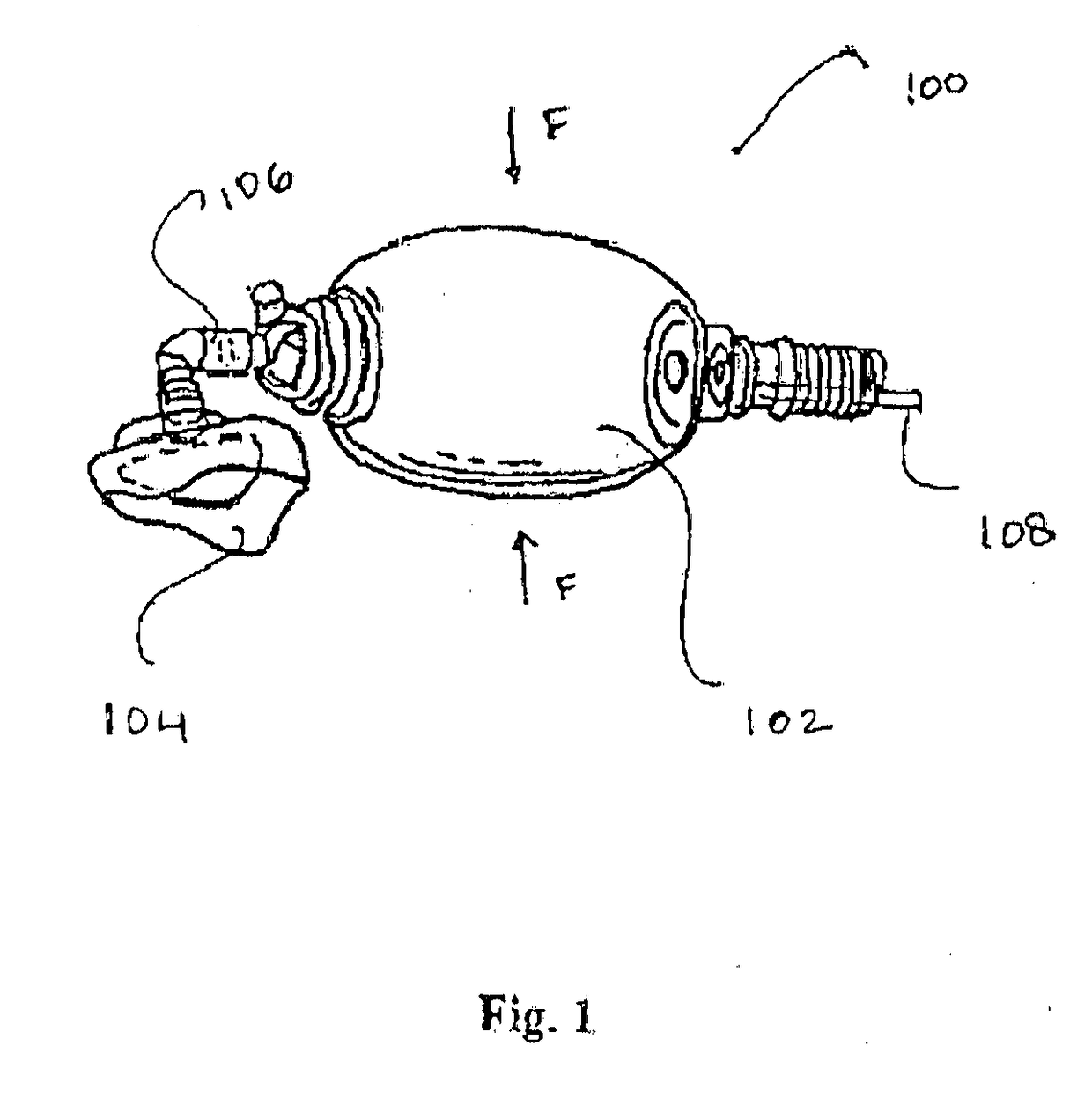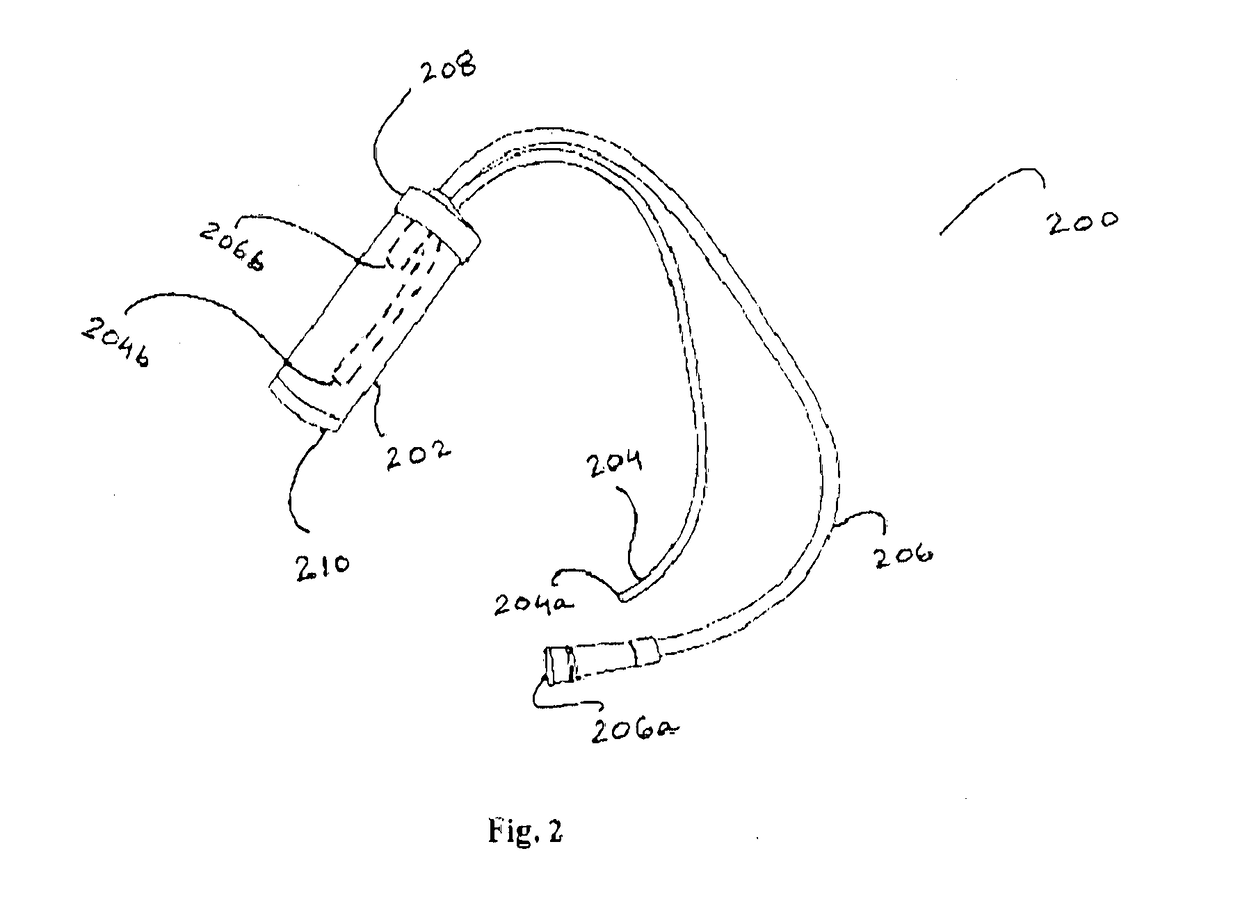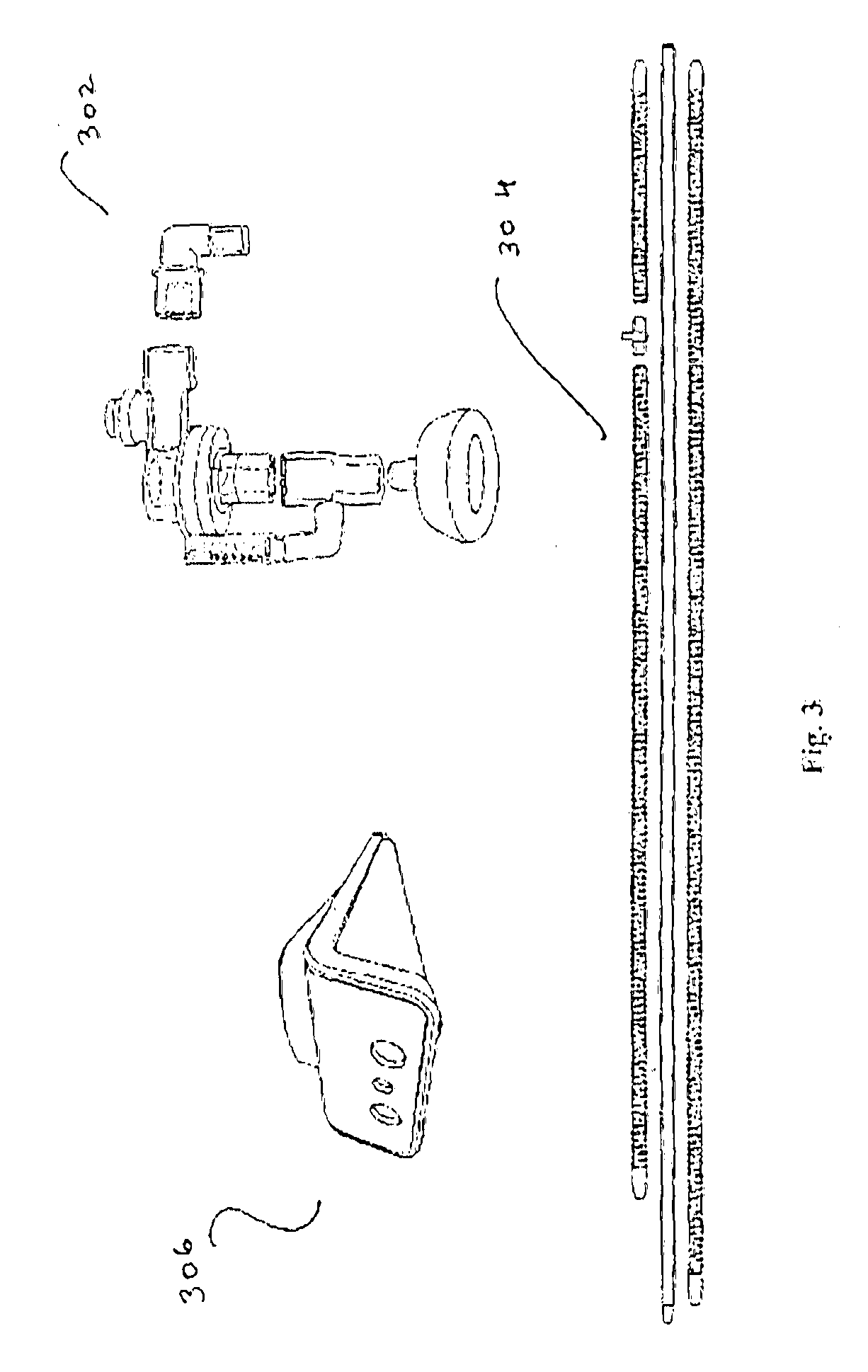Foot pedal
a foot pedal and foot pedal technology, applied in the field of foot pedals, can solve the problems of operator tire, ineffective resuscitation, air leakage and multiple drawbacks of the above-mentioned device,
- Summary
- Abstract
- Description
- Claims
- Application Information
AI Technical Summary
Benefits of technology
Problems solved by technology
Method used
Image
Examples
Embodiment Construction
[0067]The present invention provides a compact and integrated device that enables a care provider to provide positive pressure ventilation to a subject's airways and lungs, whose spontaneous ventilation is either absent or inadequate to maintain metabolic requirements, and to optionally apply suction for the purpose of aspirating mucous, secretions, meconium, blood, fluids or other such materials from a patient—specifically from airways.
[0068]As illustrated in FIG. 3, the present invention comprises an airway interface 302, a set of conduits or tubes 304 and a pedal 306. Each of these components will be described in further detail hereinbelow.
[0069]FIGS. 4A and 4B illustrate embodiments of airway interface 302 in accordance with the present invention.
[0070]As illustrated in exploded FIG. 4A, airway interface assembly 302 may be connected at an open upstream first end 402 with a gas supply or air supply conduit or tube (not shown). An open downstream second end 404 of airway interfac...
PUM
 Login to View More
Login to View More Abstract
Description
Claims
Application Information
 Login to View More
Login to View More - R&D
- Intellectual Property
- Life Sciences
- Materials
- Tech Scout
- Unparalleled Data Quality
- Higher Quality Content
- 60% Fewer Hallucinations
Browse by: Latest US Patents, China's latest patents, Technical Efficacy Thesaurus, Application Domain, Technology Topic, Popular Technical Reports.
© 2025 PatSnap. All rights reserved.Legal|Privacy policy|Modern Slavery Act Transparency Statement|Sitemap|About US| Contact US: help@patsnap.com



